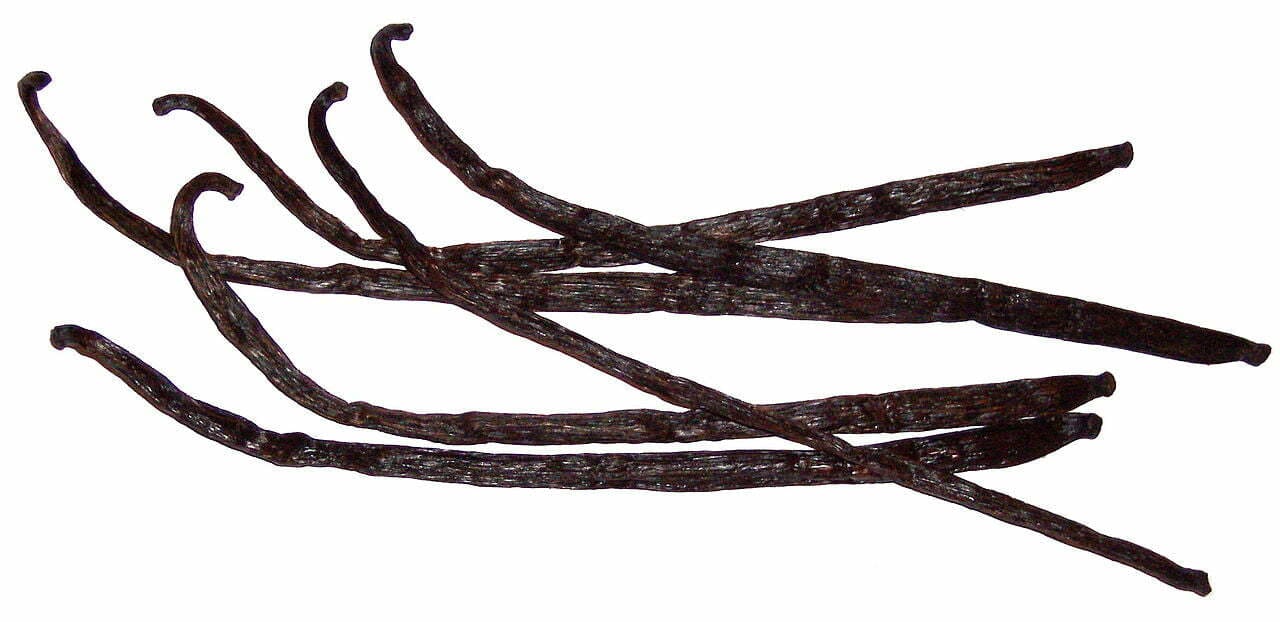
Vanilla
Vanilla, often called the “queen of spices,” is one of the most beloved flavours in the world. With its warm, sweet aroma and ability to elevate both desserts and savoury dishes, vanilla has captivated chefs and food lovers for centuries. But there’s much more to this spice than meets the eye—or the palate.
What is Vanilla?
Vanilla comes from the pods of the vanilla orchid (Vanilla planifolia), a climbing plant native to Mexico. The pods, often referred to as “beans,” are hand-pollinated and harvested before being cured and dried, a process that enhances their flavour and aroma.
This labour-intensive cultivation makes vanilla one of the most expensive spices, often dubbed “black gold.”
Where is Vanilla Used?
Vanilla is synonymous with desserts, but its versatility extends far beyond cakes and ice creams:
- Desserts: Found in everything from custards and cookies to chocolates and pastries.
- Beverages: Adds depth to coffee, tea, cocktails, and even milkshakes.
- Savory Dishes: Used in marinades, sauces, and dishes with seafood or poultry for a surprising twist.
- Fragrances: The comforting scent of vanilla is popular in perfumes and candles.
- Medicinal Uses: Traditionally used for its calming and mood-enhancing properties.
What Does Vanilla Taste Like?
Vanilla’s flavour is rich and complex, with notes of sweet cream, caramel, and floral undertones. Its warmth and subtlety make it the perfect companion to a wide range of ingredients, from chocolate and fruits to spices like cinnamon and nutmeg.
Types of Vanilla
Vanilla comes in different forms, each with its own unique characteristics:
- Vanilla Beans: Whole pods used for their intense flavour and visual appeal (those tiny black specks in your dessert).
- Vanilla Extract: A liquid made by soaking vanilla beans in alcohol; the most common form for home cooking.
- Vanilla Powder: Made from ground dried beans or extract combined with sugar or starch.
- Vanilla Paste: A thick, concentrated form of vanilla with bean specks, perfect for baking.
How to Use Vanilla in Cooking
- Desserts: Add vanilla extract or beans to cakes, puddings, or custards.
- Beverages: Infuse vanilla in coffee, tea, or homemade hot chocolate.
- Savory Dishes: Pair vanilla with seafood like scallops or lobster for a gourmet touch.
- DIY Vanilla Sugar: Store a vanilla bean in sugar to create a fragrant sweetener for baking or beverages.
The History of Vanilla
Vanilla has a fascinating history, deeply rooted in ancient cultures:
- Mesoamerican Origins: The Totonac people of present-day Mexico were the first to cultivate vanilla, using it in rituals and as a flavouring for chocolate.
- Aztec Use: The Aztecs adopted vanilla and called it tlilxochitl, using it to enhance their cacao drinks.
- European Introduction: In the 16th century, Spanish explorers brought vanilla to Europe, where it quickly became a luxury item.
Today, Madagascar is the largest producer of vanilla, followed by Indonesia and other tropical regions.
Fun Facts About Vanilla
- The vanilla orchid only blooms for one day, and each flower must be hand-pollinated.
- Pure vanilla extract contains over 200 flavour compounds, making it incredibly complex.
- Vanilla is the second most expensive spice in the world, after saffron.
- Synthetic vanillin, made from wood pulp or petrochemicals, is often used in commercial products to mimic vanilla’s flavour.
- Vanilla has been used in traditional medicine to aid digestion and reduce stress.
How to Choose and Store Vanilla
- Choosing Vanilla: Look for plump, oily beans with a strong aroma. Avoid brittle or overly dry pods.
- Storing Vanilla: Keep vanilla beans in an airtight container in a cool, dark place. Extract should be stored at room temperature, away from direct sunlight.
